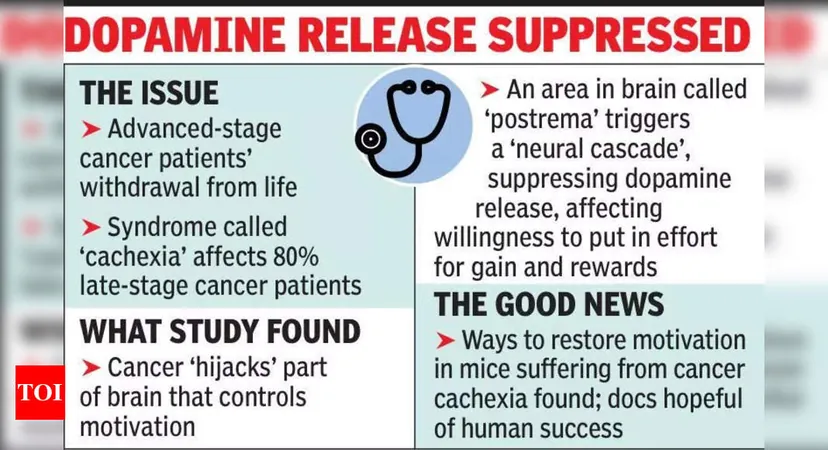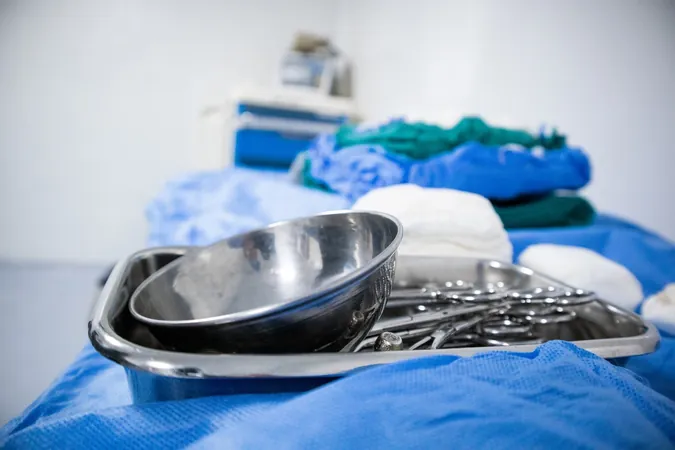
Revolutionary Study Links Brain Function to Urinary Incontinence in Stroke Survivors
2025-04-10
Author: Arjun
A Groundbreaking Discovery in Stroke Recovery
A pioneering study from the University of Southern California (USC) has revealed key brain activity patterns that are closely associated with urinary incontinence, a troubling condition that afflicts a staggering number of stroke survivors. Published in the journal *Stroke*, this research unveils essential insights into the brain's role in bladder control, paving the way for innovative therapies that could vastly improve the lives of those affected.
The Hidden Struggles of Stroke Survivors
Urinary incontinence is disturbingly common among stroke survivors, impacting up to 79% of individuals soon after a stroke, with nearly 40% facing the issue a year later. Characterized by sudden, uncontrollable urges and involuntary leakage, this condition severely diminishes overall quality of life. Moreover, untreated urinary incontinence can lead to long-term complications, including increased mortality and heightened disability. Despite its prevalence, this condition often remains inadequately addressed.
Unlocking the Brain's Secrets with fMRI
To explore the underlying mechanisms, researchers employed functional magnetic resonance imaging (fMRI) to capture brain activity during bladder contractions—both voluntary and involuntary—among stroke survivors. This approach is a leap forward, providing a clearer picture of how the brain regulates bladder control.
Dr. Evgeniy Kreydin noted, “The brain is integral to bladder regulation, enabling individuals to control their urination responses. Stroke disrupts these pathways, causing challenges like unwanted contractions and a loss of bladder sensation.” This new research offers clarity on the complexities of this dysfunction.
Shocking Differences in Brain Activity
A significant finding emerged: there are stark contrasts in brain activity during voluntary versus involuntary urination. In healthy individuals, the brain regions responsible for decision-making and motor control showed typical activation during voluntary urination. Conversely, stroke survivors struggling with involuntary urination displayed minimal activation in these critical areas, highlighting a disconnect in the brain's urinary control networks.
Moreover, when healthy participants’ bladders filled before voluntary urination, their salience network—responsible for evaluating stimuli and orchestrating responses—was activated. However, in stroke survivors, this network remained dormant during involuntary urination, signifying a crucial potential mechanism behind their urinary incontinence.
Hope for New Treatments
The implications of these findings are vast, opening avenues for targeted therapies to restore bladder function in stroke survivors. The research team proposes several promising interventions, including:
- **Non-invasive brain stimulation methods** like transcranial magnetic stimulation (TMS) to engage the salience network effectively.
- **Medicinal approaches** aimed at boosting neural activation in areas vital for urinary control.
- **Cognitive training and biofeedback treatments** to enhance awareness and voluntary bladder management.
Future Research Directions
Lead author Dr. Charles Liu, director of the USC Neurorestoration Center, expressed enthusiasm for further studies. He underscored the necessity of continued exploration into the neurological aspects of urination, particularly after a stroke.
Liu stated, “This research not only deepens our understanding of a common post-stroke complication but also has the potential to elevate the quality of life for millions of stroke survivors around the globe.”


 Brasil (PT)
Brasil (PT)
 Canada (EN)
Canada (EN)
 Chile (ES)
Chile (ES)
 Česko (CS)
Česko (CS)
 대한민국 (KO)
대한민국 (KO)
 España (ES)
España (ES)
 France (FR)
France (FR)
 Hong Kong (EN)
Hong Kong (EN)
 Italia (IT)
Italia (IT)
 日本 (JA)
日本 (JA)
 Magyarország (HU)
Magyarország (HU)
 Norge (NO)
Norge (NO)
 Polska (PL)
Polska (PL)
 Schweiz (DE)
Schweiz (DE)
 Singapore (EN)
Singapore (EN)
 Sverige (SV)
Sverige (SV)
 Suomi (FI)
Suomi (FI)
 Türkiye (TR)
Türkiye (TR)
 الإمارات العربية المتحدة (AR)
الإمارات العربية المتحدة (AR)